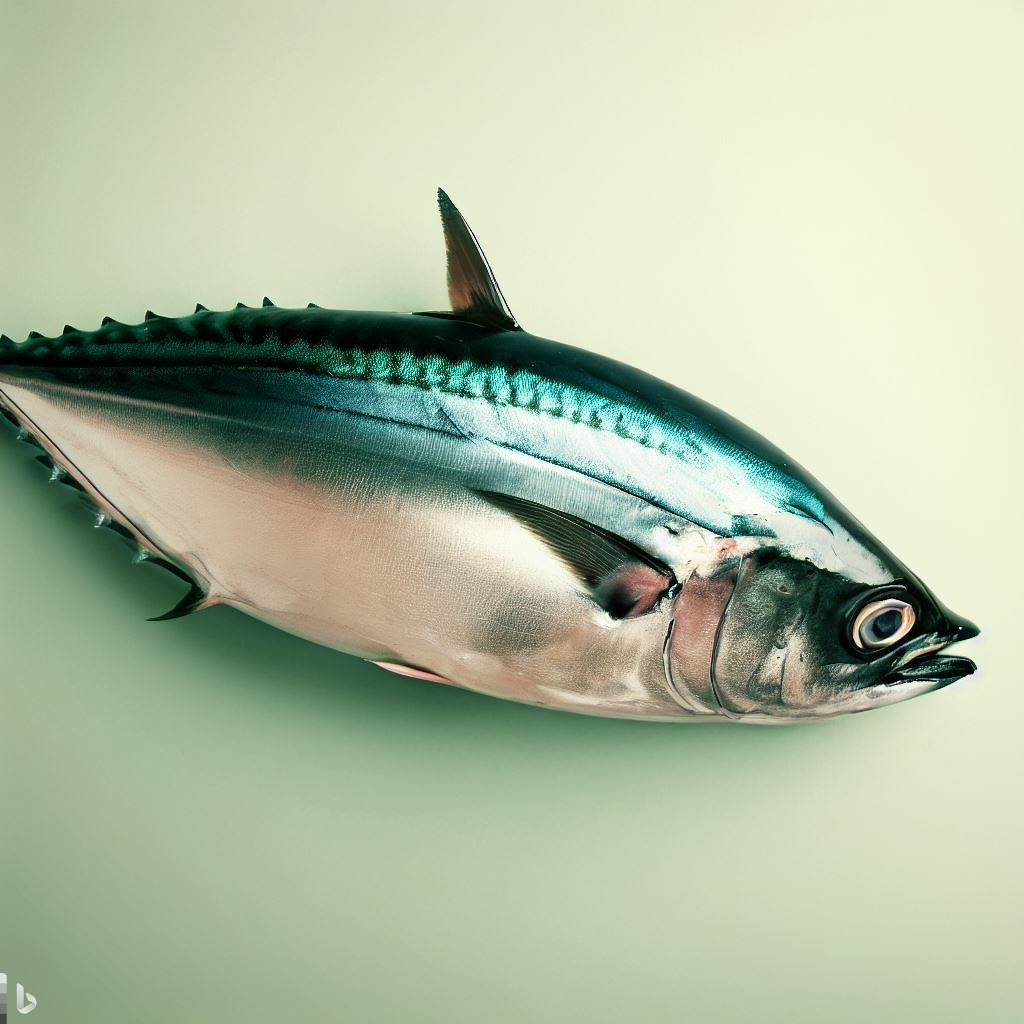Albacore tuna

Within the vast realm of marine life, there exists a species that stands out due to its remarkable attributes and ecological significance: the albacore (Thunnus alalunga). Commonly referred to as longfin tuna or albies, this extraordinary fish belongs to the Scombridae family, which encompasses other well-known species such as mackerels and bonitos.
Distinguishing the albacore from its counterparts is its unique anatomical and physical characteristics. On average, these fish measure approximately 100-120 cm (3.3-3.9 ft) in length, with a maximum size reaching 140 cm (4.6 ft). In terms of weight, they typically range from 10-25 kg (22-55 lb), although some individuals impressively exceed 40 kg (88 lb). With an average lifespan of 12-15 years in the wild, a few exceptional specimens have been known to survive for up to 20 years.
One particularly striking trait of the albacore is its sleek body design, meticulously crafted for rapid swimming and efficient hunting. Sporting a metallic blue to dark blue dorsal surface and silver-white undersides, they possess pectoral fins that are remarkably elongated compared to other tuna species. It is from these extended fins that the moniker "longfin tuna" is derived, as they can span up to one-third of the total body length.
Optimal Fishing Periods for Albacore
The art of albacore fishing hinges on precise timing for a fruitful expedition. Understanding the behavioral patterns of these fish can aid anglers in effectively planning their ventures. Albacore are most active during the early morning and late afternoon, coinciding with the splendors of sunrise and sunset. These periods boast the ideal water temperature, ranging between 59-64°F (15-18°C), which albacore find most favorable.
Weather conditions also wield substantial influence over albacore fishing. Thriving in areas characterized by robust ocean currents, particularly where cold and warm water masses converge, these fish frequently inhabit underwater canyons, seamounts, and upwelling zones. Regarding seasonal preferences, albacore fishing reaches its zenith during the summer and autumn months, as these periods witness their migration to higher latitudes in pursuit of prey.
Distribution Range of Albacore
Albacore boast a vast geographical presence, inhabiting both the Atlantic and Pacific Oceans. In the Atlantic, they can be found in locales spanning from the North Sea and the Mediterranean Sea to the Gulf of Mexico. In the Pacific, their range encompasses regions from Japan and Korea to the western coasts of the Americas, including California, Oregon, and Washington.
During their migratory expeditions, albacore traverse extensive distances, occasionally spanning entire ocean basins. Renowned for their awe-inspiring journeys, these fish can travel up to 10,000 km (6,200 miles) in a single year. These expansive movements facilitate their exploitation of various feeding grounds and allow them to capitalize on seasonal fluctuations in water temperature and prey availability.
Albacore Spawning Behavior
The spawning behavior of albacore represents a pivotal phase in their life cycle. This crucial event predominantly transpires during the warmer months, coinciding with water temperatures ranging from 64-72°F (18-22°C). Females release copious quantities of eggs into the water column, which are externally fertilized by the males. These eggs, colloquially referred to as "roe," metamorphose into larval fish known as "fry."
The specific spawning grounds utilized by albacore vary among populations. In the Pacific, they primarily spawn in western and central areas, while in the Atlantic, their preferred sites include the Mediterranean Sea and the Gulf of Mexico. The timing and location of these spawning grounds significantly impact the successful reproduction and subsequent survival of the species.
Feeding Preferences of Albacore
As consummate predators, albacore exhibit a diverse dietary repertoire, comprising small fish, squid, and crustaceans.
Armed with exceptional speed and agility, they actively pursue and capture their prey. Albacore are opportunistic feeders, capitalizing on available food sources as circumstances dictate.
During colder months, albacore display reduced activity levels and slower movements. This behavioral shift is thought to be influenced by lower water temperatures, which impact their metabolic processes. Nonetheless, they can still be observed feasting upon more lethargic prey items. By virtue of their feeding habits, albacore contribu
te to the regulation of small fish and other aquatic organism populations, fostering equilibrium within marine ecosystems.
Ecological Significance
The ecological value of albacore within marine ecosystems is of paramount importance. Their predatory nature and feeding habits serve as crucial checks on the populations of small fish and other aquatic organisms. By exerting control over these populations, albacore contribute to the overall health and equilibrium of their habitats. Furthermore, they constitute a vital food source for larger predatory species, ensuring the stability of the food web.
Moreover, albacore possess substantial economic value, supporting commercial and recreational fisheries worldwide. Their delectable meat and popularity among seafood enthusiasts render them an invaluable catch. The preservation of albacore populations and their long-term sustainability necessitate the implementation of sustainable management practices.


